How do the market-leading RPA tools compare? A short guide to UiPath, Blue Prism, Automation Anywhere, and Microsoft Power Automate
Share the article
This post dives into some of the market-leading RPA tools’ particular strengths and features, helping you form a rough idea about their fit for your business.
If you landed on this blog directly and are currently evaluating your choice of technology, we suggest you read our article “How to select the right RPA technology for your business?” before reading ahead about the particular strengths of different solutions. The linked blog discusses the various dimensions you need to consider to make a well-informed technology decision, from describing your goal to resourcing and calculating the total cost of your RPA effort.
Continue reading on to learn more about…
- UiPath
- Blue Prism
- Automation Anywhere
- Microsoft Power Automate
Please note that the descriptions given in this post were correct as of July, 2021, but may be subject to change due to the market’s short product development cycles.
Why should you favor market-leading RPA tools?
It may be self-evident but it is essential to acknowledge that, while there are many RPA tools available on the market, limiting your options to the highest-ranking vendors ensures you choose from technologies that have been proven reliable when used on an industrial scale. These top technologies also tend to have the most features and robust R&D programs to ensure that products continue to evolve with powerful extras when compared to other RPA.
All the leading RPA technologies are very versatile and can be used to automate an equal number of processes but, in some cases, one solution may be preferable to another.
UiPath
Over the past few years, UiPath has established itself worldwide as the fastest-growing RPA vendor. The company has its beginnings in the automation of front-end processes, which means that it is particularly suited for human-in-the-loop automation. It can also be used to automate back-office processes.
UiPath is the best option for creating automations in a Citrix environment. It automates manual processes on all Citrix applications faster than any other RPA.
UiPath offers free online training and has a particularly established open user community that promotes collaboration. From the developer’s perspective, the tool itself is well-suited for collaboration between teammates. For example, UiPath’s source control systems are very handy when developing larger projects that require smooth cooperation between multiple users.
People with a coding background typically favor UiPath more than business users do. Learning the tool may take longer for someone with no prior coding experience, although the platform uses very intuitive drag-and-drop functionalities. Plus, it supports task recording – recording a user’s actions in a target system to create an automation.
The default coding language in UiPath is VB .NET. In 2020, UiPath introduced C#. However, it’s still recommended that users learn and use VB .NET because almost all documentation and guides pertain to or reference VB .NET.
Image 1. Developer’s process layer view on UiPath Studio
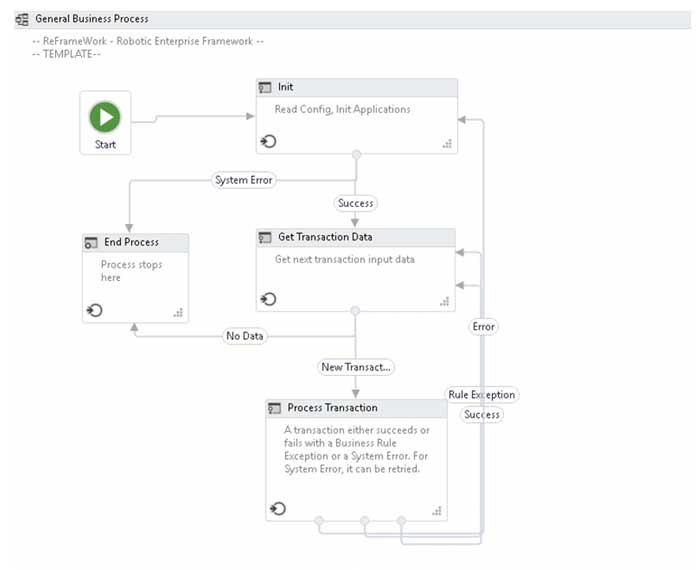
Image 2. Developer’s detailed layer view on UiPath Studio
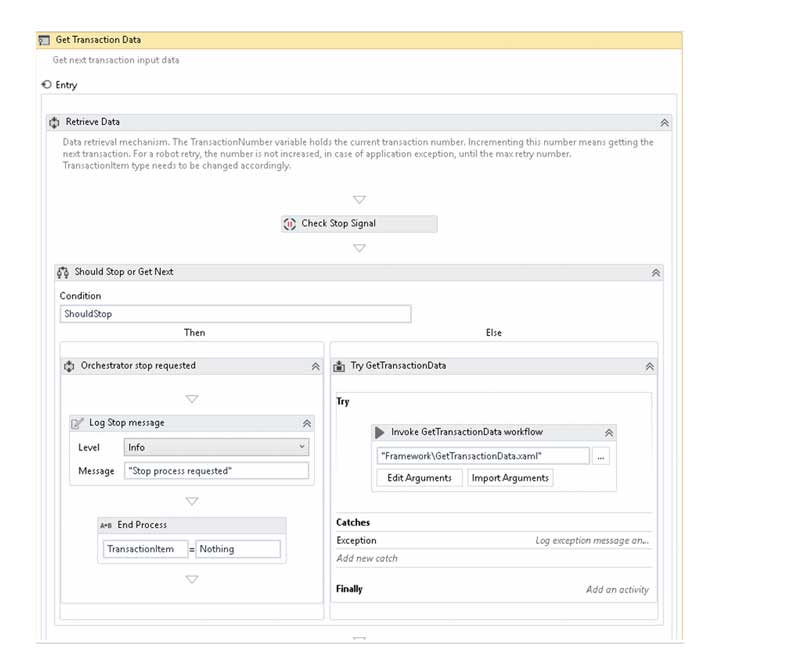
UiPath currently offers the market’s most comprehensive range of add-ons, including: process mining, collaborative discovery, assessment tools, and embedded AI functionalities that classify and extract data from unstructured, semi-structured, and structured documents.
Having suffered from complex licensing, the vendor recently switched to a persona-based licensing model. This bundles a range of automation capabilities into a single offering. UiPath sits in the high-priced category of RPA.
+ Favored by advanced developers
+ Strong in both unattended/ back-office and attended/ front-office automation
+ Strong global market position
+ Widest range of add-ons
+ Citrix development
Blue Prism
It is exceptionally intuitive to business users – even those with little to no coding experience. This supports quick adoption and organization-wide automation scaling. The tool is based on the Java programming language and supports a visual designer with a wide range of drag-and-drop functionalities.
Image 3. Developer’s process layer view on Blue Prism

Image 4. Developer’s detailed layer view on Blue Prism
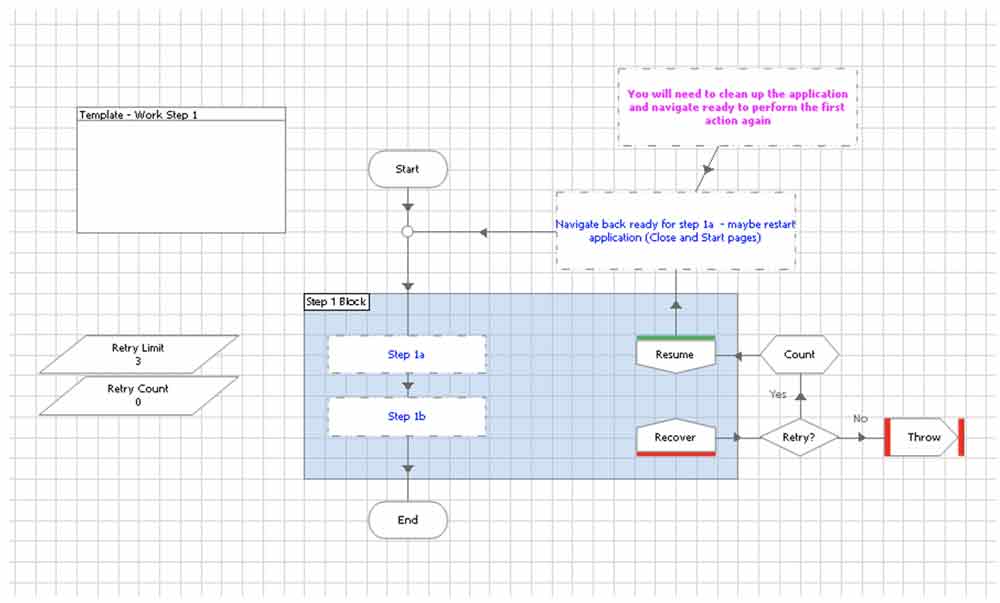
Historically, Blue Prism has been built to automate back-end processes. Today, this means third-party solutions like Trust Portal must be used to produce front-office automation that requires human-robot interactions.
Blue Prism’s licensing model is also less complicated than most of its competitors, meaning that in the beginning costs are often lower.
There are also some specific operating systems where using Blue Prism is most efficient, for example, in SAP. Digital Workforce has created an Automation Creator for SAP that works together with Blue Prism and can cut development time in SAP by 90%.
+ Business user friendly
+ Particularly strong in unattended automation/ back-end processes (can be used in attended/ front-office automation by connecting to a third-party solution)
+ Strong market position, particularly in Europe
+ Moderate pricing
+ SAP development
Automation Anywhere
Automation Anywhere (AA) is completely script-based but it has a lot of automation components preconfigured, which users can drag and drop to create sequences.
Creating customized non-standard automation solutions, however, requires advanced IT or coding experience. Automation Anywhere’s version 11.x is built on Java. All previous versions were built on .NET.
Image 5. Developer’s process layer view on Automation Anywhere
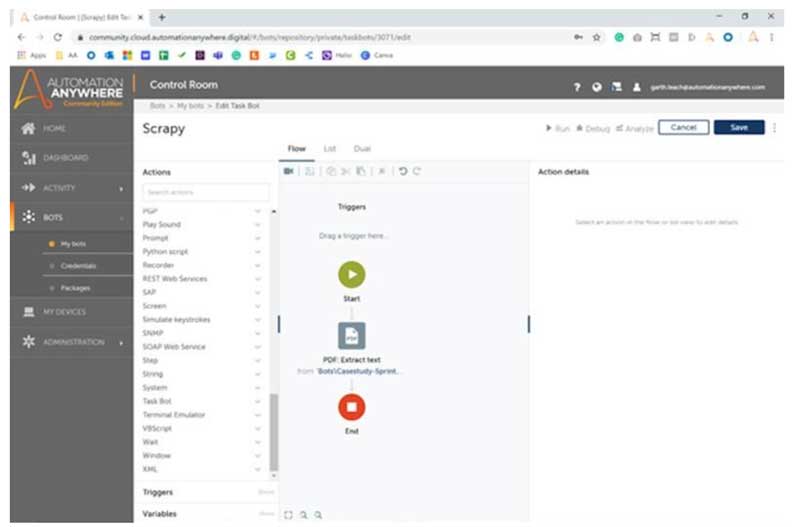
Image 6. Developer’s process layer view on Automation Anywhere, modifying the script.
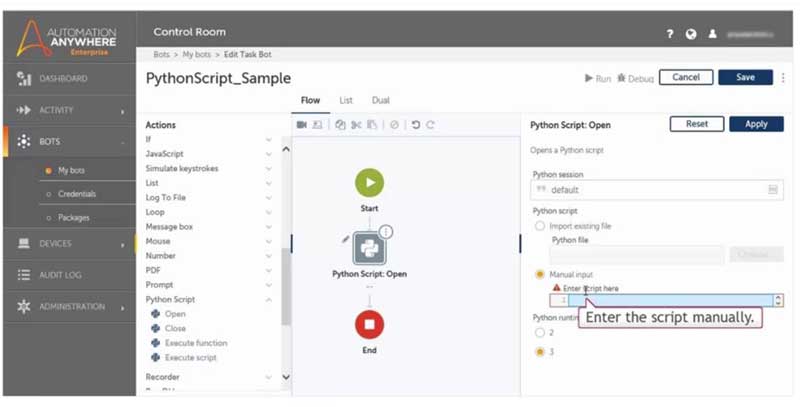
+ Favored by advanced developers
+ Strong in both unattended/ back-office and attended/ front-office automation
+ Firm position, particularly in the United States
Microsoft Power Automate
Power Automate (PA) is a relative newcomer to the Robotic Process Automation field but, considering its origins, it is a formidable one. The technology is owned by Microsoft, a powerful player in any area it chooses to focus on and a guarantee of quality.
Power Automate is live on the cloud and requires no installation, only an Office account. This low barrier to entry, no-code development, and competitive user-based pricing helps organizations tap into new opportunities – for example, by automating individual tasks or processes previously considered too expensive to automate.
Microsoft’s vision for Power Automate is to power citizen development at scale and this makes it possible to include all employees in automation development. This exciting approach, however, comes with some practical challenges when it comes to quality management and the scalability of developed solutions.
Image 7. Developer’s process layer view on Power Automate
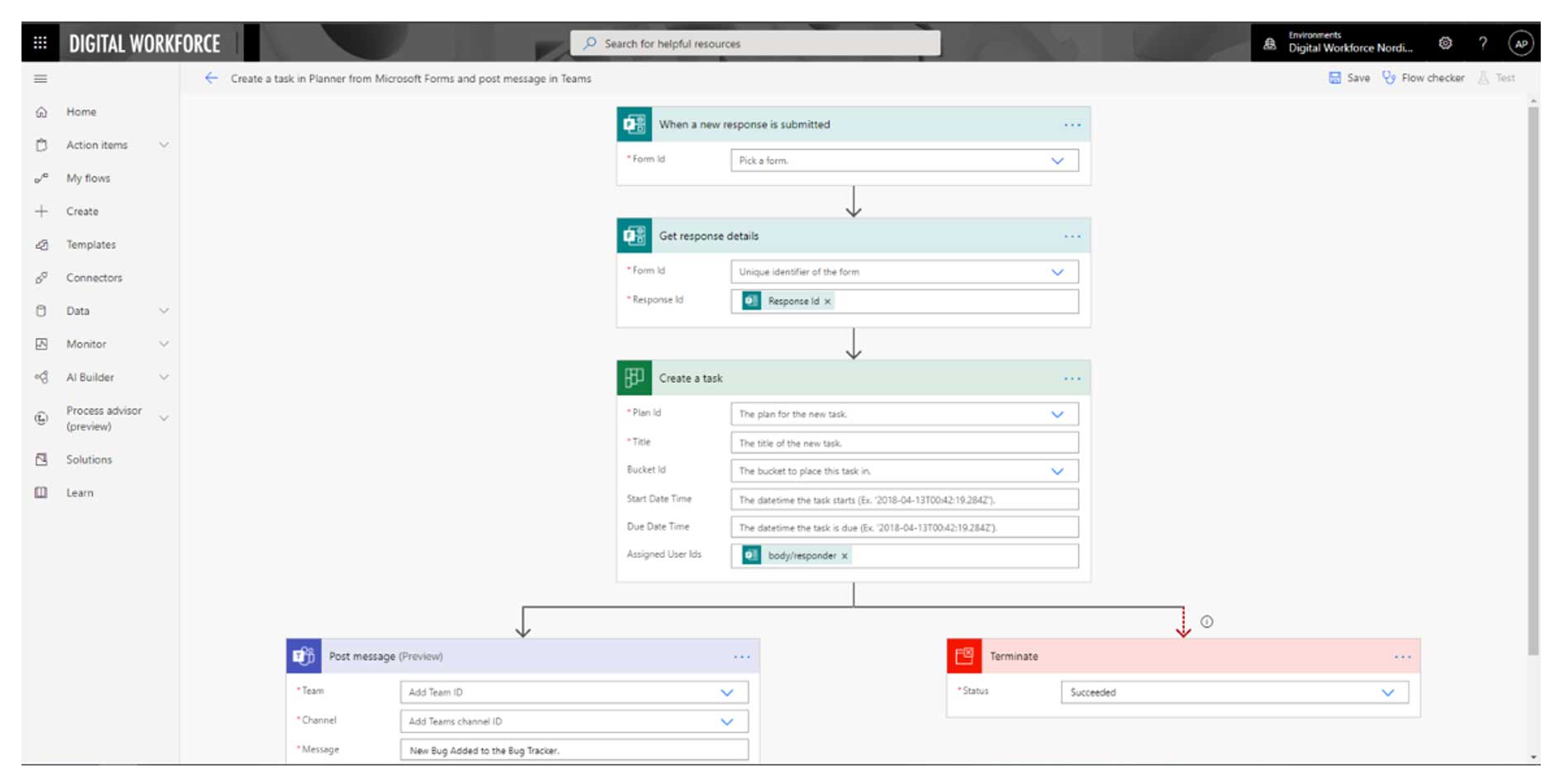
Image 8. Pre-build API connectors in Power Automate
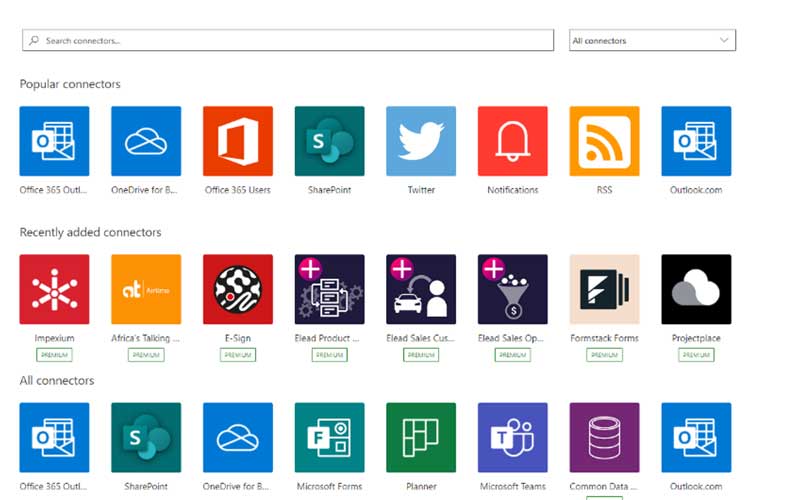
+ Business user-friendly – clear vision to empower citizen development
+ Particularly well-suited for attended automation and on-demand short workflows
+ Strong global market position
+ Affordable pricing
+ Development in Microsoft’s own cloud-based tools
Should you commit to buying just one technology for a set period?
All RPA tools are fundamentally executing the same functionality. That is, automating mundane rule-based tasks so that humans can concentrate on more advanced tasks. However, when you look a bit closer, it can become apparent that making use of more than just one RPA technology would improve your business outcomes.
Moreover, adding flexibility to your technology toolbox enables you to react with agility to future developments in the field – which can most certainly be expected! Continue reading here to learn more about how committing to buy just one technology for a set period may negatively impact your automation program.
We should also establish that there is, in fact, a multi-technology platform that offers a way to buy multiple RPA technologies with one price tag, on-demand. Buying technology on-demand also ensures you eliminate fixed costs and pay only for what you use. Learn about our two multi-technology service options that deliver RPA on-demand:
1) Managed Service Roboshore and
2) Robot-as-a-Service automation platform.